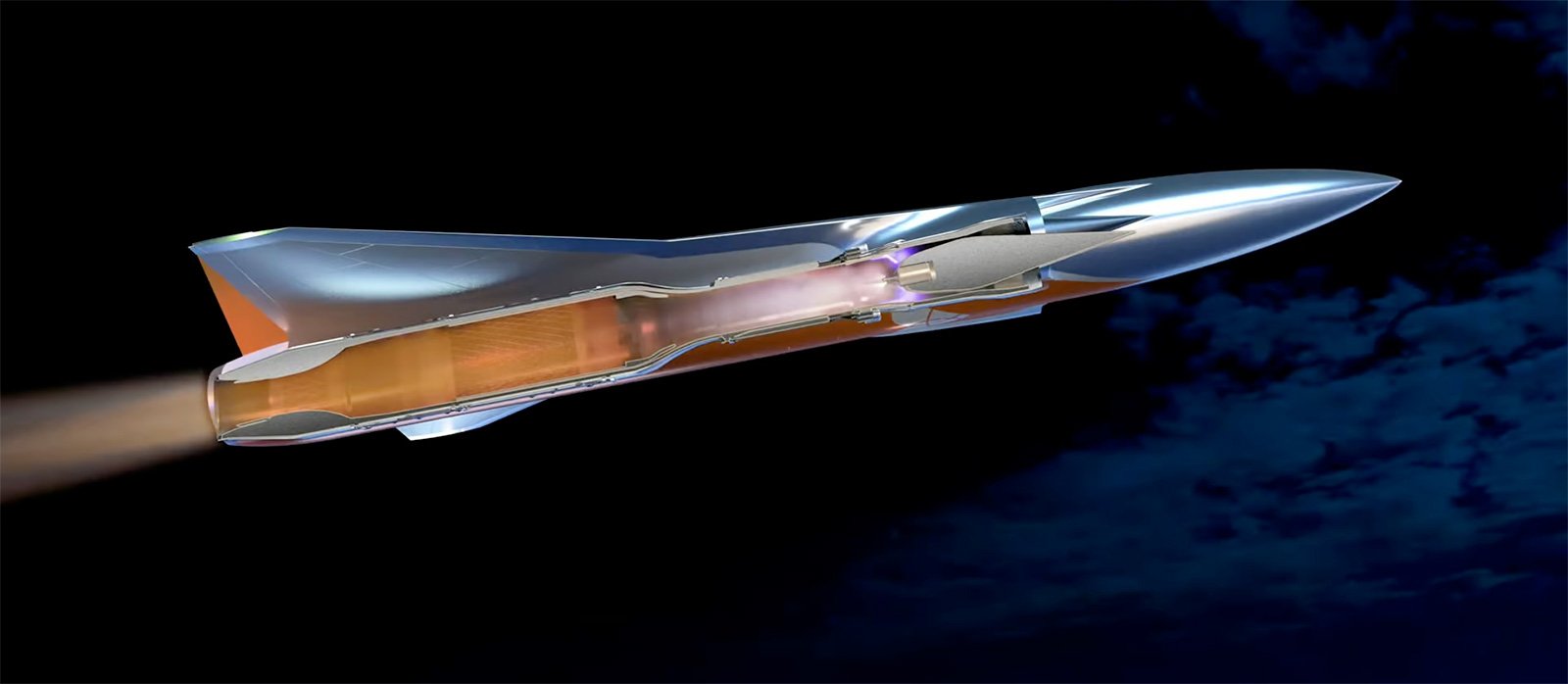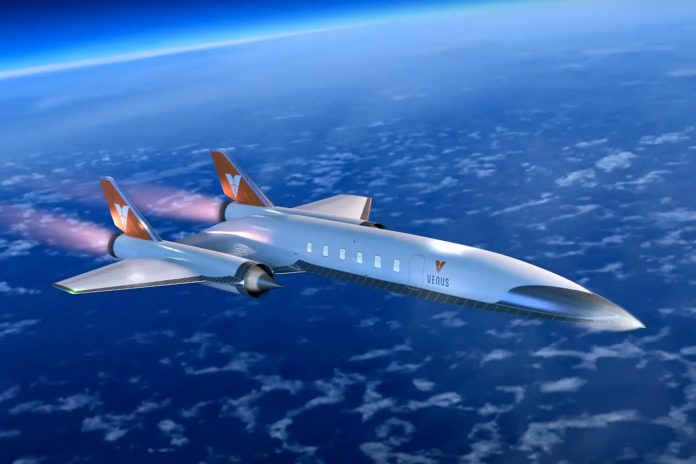Venus Aerospace has unveiled its new Venus Detonation Ramjet 2000 lb Thrust Engine (VDR2), a rotating detonation ramjet engine designed to enable hypersonic flight. The engine, which appears deceptively simple as an empty tube in cutaway views, aims to overcome one of the major challenges in making hypersonic flight practical: building engines capable of sustained thrust at extreme speeds.
Current hypersonic systems primarily rely on glide bodies that are boosted to high speeds and altitudes by rockets. These systems then accelerate to over Mach 5 by gliding back to lower altitudes. While effective for certain applications, this approach is not suitable for commercial airliners that would, for instance, fly from San Francisco to Tokyo in one hour. For such purposes, an engine more akin to a jet engine is necessary.
The VDR2 is essentially a ramjet engine, which compresses incoming air using the forward motion of the engine itself, rather than employing spinning turbine blades as in conventional jet engines. This design results in an engine with no moving parts, making it mechanically simpler and more tolerant of the high temperatures encountered at hypersonic speeds. Air entering an engine at such velocities can cause internal temperatures to reach as high as 2,130 °C (3,860 °F), which would quickly damage or melt turbine blades and other components.
Taking the concept a step further, the VDR2 incorporates a Rotating Detonation Rocket Engine (RDRE). The RDRE consists of two coaxial cylinders with a narrow gap between them. A mixture of fuel and oxidizer is injected into this gap and ignited. When configured correctly, the detonation generates a closely coupled reaction and shock wave that travels around the gap at supersonic speeds. This process increases the heat and pressure within the engine, enhancing its thrust and efficiency without the need for moving parts.

The result is a low-drag engine capable of producing the high thrust and efficiency needed to power an aircraft to speeds of up to Mach 6 and altitudes of 170,000 feet (52,000 meters). According to Venus Aerospace’s design goals, the VDR2 is expected to be 15% more efficient than conventional engines. The engine is being developed in partnership with Velontra, leveraging their expertise in high-speed air combustion and building on previous projects by Venus Aerospace.
“This engine makes the hypersonic economy a reality,” said Venus Aerospace CTO Andrew Duggleby. “We are excited to partner with Velontra to achieve this revolution in high-speed flight, given their expertise in high-speed air combustion.”
The VDR2 is scheduled to make its first test flight in a drone next year, marking a significant step toward practical hypersonic flight. If successful, the technology could pave the way for hypersonic airliners and transform long-distance travel.
Source: Venus Aerospace



